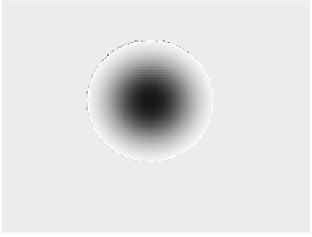Biomedical Engineering Reference
In-Depth Information
3.3
Manipulation of Biological Materials
The imaging and manipulation of biomolecules, cells, and other biological materials
are complementary and strongly related issues. In some cases, the AFM or STM
can manipulate or arrange biomolecules or even cells (
Rajagopalan and Saif 2011
).
But, as we will see below, there are special physical principles and experimental
setups, circuits, and even equipments dedicated to this task. The main methods
to manipulate, trap, and study the properties of various biological materials are
dielectrophoresis or the use of optical tweezers.
Dielectrophoresis (DEP) refers to the generation of a lateral force exerted on any
dielectric object, which could be a particle, a cell, DNA, etc., due to an applied
inhomogeneous electric field. The time-average DEP force is given by
F
DEP
D
2"
m
R
3
CM.
r
E
2
/;
(3.22)
where "
m
D
"
0
"
r
is the permittivity of the surrounding medium, R is the radius
of the dielectric object, CM is the Clausius-Mossotti factor that describes the
polarizability of the particle,
r
is the gradient operator, and E is the scalar amplitude
of the electric field E expressed in rms. In a nonuniform electric field, a dielectric
sphere becomes polarized, which is equivalent to generating an effective dipole
moment p
D
kE
, proportional to the applied field (see Fig.
3.7
).
The DEP force can be expressed also as follows:
F
DEP
D
4"
m
R
3
"
p
"
m
"
p
C
2"
m
.E
r
/E;
(3.23)
since CM is given by
"
p
"
m
"
p
C
2"
m
;
CM
D
(3.24)
in which "
p
is the permittivity of the particle. A positive CM means that work is
needed to pull out a dielectric particle from a high field region, while a negative CM
means that work is required to drive the particle from a low field region to a region
with high value of the electric field.
F
DEP
p
Fig. 3.7
The dielectric
sphere and its associated DEP
force
E




Search WWH ::

Custom Search